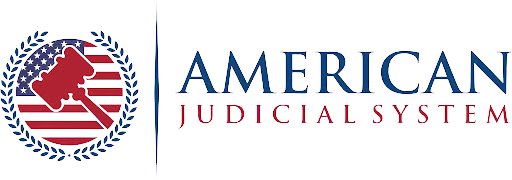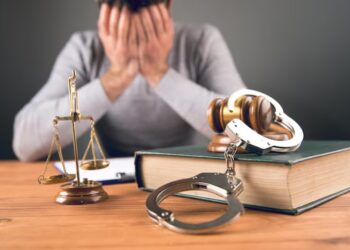It happens in an instant. One moment you’re waiting at a red light, thinking about dinner plans or your next meeting, and the next, you’re jolted forward by the impact of another car slamming into yours. Rear-end collisions can seem minor at first, especially if the damage to your vehicle looks small. But a Fresno car injury law firm attests that for many people, the real damage hides beneath the surface—right in the lower back. The discomfort may start as a dull ache and grow into something that affects every part of your daily life. Understanding how to rehabilitate your lower back after a rear-end collision properly is essential not just for recovery, but also for protecting your long-term health and even your legal rights.
Back Woes: Hidden Impact of Rear-End Collisions
When your body absorbs the sudden force of a rear-end collision, your lower back often takes the brunt of it. The impact can do the following:
- Strain muscles
- Shift spinal discs
- Pinch nerves
All of those can lead to pain that doesn’t always appear immediately. In fact, some people feel fine right after the accident, only to wake up days later with stiffness, spasms, or shooting pain down their legs. That delay happens because inflammation builds over time, and your body’s initial adrenaline rush can mask pain signals. If you notice even mild discomfort in your lower back after an accident, don’t ignore it. Early evaluation is key to preventing chronic issues.
Start with a Thorough Medical Evaluation
The first step in your recovery should always be a comprehensive medical checkup. Even if you think it’s “just soreness,” it’s worth having imaging tests like X-rays or an MRI to rule out disc injuries or fractures. Once your doctor confirms the extent of your injury, they can recommend the right course of treatment. In many cases, that starts with rest and ice to reduce inflammation. But resting too long can actually slow your recovery, which is why doctors usually recommend a gradual return to movement under a physical therapist’s guidance.
The Power of Physical Therapy in Recovery
Physical therapy plays a major role in lower back rehabilitation after a car accident. A skilled therapist will focus on restoring your range of motion, improving core strength, and teaching you proper body mechanics. These sessions include gentle stretches, low-impact exercises, and targeted strengthening routines that help stabilize the spine. The goal is not just to relieve pain, but to rebuild the support system around your lower back so you can move confidently again. Many people are surprised by how much their posture, sitting habits, and even the way they get out of bed can affect their recovery. A good therapist will help you correct those patterns to prevent future strain.
Complementary Treatments That Can Help
Chiropractic care can also be beneficial, especially if your spine was jolted out of alignment during the crash. Gentle adjustments can relieve pressure on nerves and help reduce stiffness. For others, massage therapy or acupuncture might offer additional relief. The key is to communicate with your medical team and choose treatments that complement each other. Pain medication can be part of the plan, but it should never replace the hands-on rehabilitation work your body needs.
Everyday Habits That Support Healing
Recovery doesn’t stop in the clinic—it continues at home. Simple changes like using proper lumbar support when sitting, avoiding heavy lifting, and doing prescribed stretches daily can make a big difference. Some people also find heat therapy soothing once the initial swelling goes down. A warm compress or a hot bath can help loosen tight muscles and increase blood flow to the healing area. Maintaining a balanced diet and staying hydrated can also support your body’s natural repair process. Healing is both physical and mental, so giving yourself patience and time is just as important as following your treatment plan.
Why Legal Guidance Matters in Your Recovery
However, it’s important to recognize that physical healing isn’t the only part of your recovery. A rear-end collision can also bring financial stress, especially if medical bills pile up or your injuries keep you from working. Insurance companies may seem helpful at first, but they often look for ways to minimize payouts. That’s why seeking legal help early on can protect you from being taken advantage of. A personal injury lawyer who understands car accident cases can handle communication with insurance adjusters, gather medical evidence, and make sure your claim reflects the full impact of your injuries—including ongoing pain or rehabilitation costs.
If you live in a city with trusted legal professionals, it’s worth reaching out for a consultation. Many personal injury lawyers work on a contingency basis, meaning you don’t pay unless they win your case. They can guide you through every step, from documenting medical visits to negotiating settlements that truly cover your needs. After all, recovery isn’t just about easing your back pain—it’s about rebuilding your sense of normalcy and ensuring you have the resources to move forward.
Final Thoughts: Healing Fully
Rear-end collisions can turn your life upside down in seconds, but with the right care, you can regain strength, mobility, and peace of mind. Start with your health—get checked, follow your treatment plan, and be consistent with your exercises. Then, protect your future by seeking trusted legal support from a Fresno car injury law firm or wherever you live. Healing takes time, but when you combine medical care with the right legal guidance, you give yourself the best chance to recover—physically, financially, and emotionally fully.









